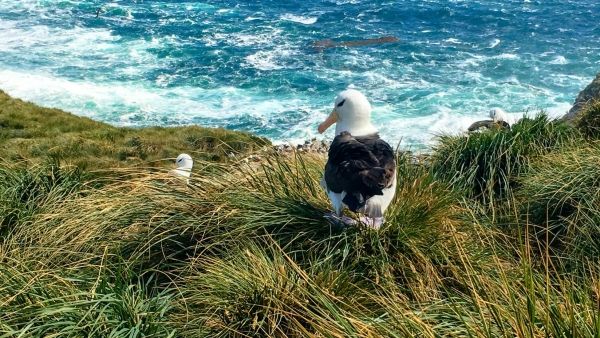The Falkland Islands are a South Atlantic refuge for some of the world’s most important seabird species, including five species of penguins, Great Shearwaters, and White-chinned Petrels. In recent years, their breeding grounds in the coastal tussac (Poa flabellata) grasslands have come under increasing pressure from sheep grazing and erosion. And unlike other regions of the globe, there has been no long-term monitoring of the responses of these burrowing and ground nesting seabirds to climate change.
A 14,000-year paleoecological reconstruction of the sub-Antarctic islands led by University of Maine researchers has found that seabird establishment occurred during a period of regional cooling 5,000 years ago. Their populations, in turn, shifted the Falkland Islands ecosystems through the deposit of high concentrations of guano that helped nourish tussac, produce peat and increase the incidence of fire.
This terrestrial-marine link is critical to the islands’ grasslands conservation efforts going forward, says Dulcinea Groff, who led the research as a UMaine Ph.D. student in ecology and environmental sciences, and part of a National Science Foundation-funded Interdisciplinary Graduate Education Research Traineeship (IGERT) in Adaptation to Abrupt Climate Change (A2C2). The connection of nutrients originating in the marine ecosystem that are transferred to the terrestrial ecosystem enrich the islands’ nutrient-poor soil, thereby making the Falkland Islands sensitive to changes in climate and land use.
Continue reading at University of Maine
Image via University of Maine


